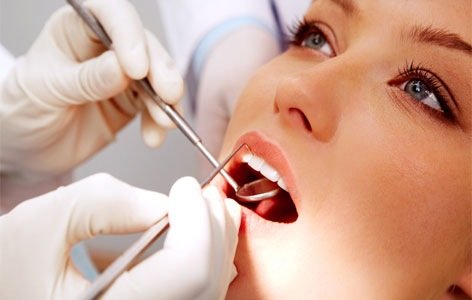 There are times when it is necessary to remove a tooth. Some teeth are extracted because they are severely decayed; others may have advanced periodontal disease, or have broken in a way that cannot be repaired. Other teeth may need removal because they are poorly positioned in the mouth (such as impacted teeth), or in preparation for orthodontic treatment.
There are times when it is necessary to remove a tooth. Some teeth are extracted because they are severely decayed; others may have advanced periodontal disease, or have broken in a way that cannot be repaired. Other teeth may need removal because they are poorly positioned in the mouth (such as impacted teeth), or in preparation for orthodontic treatment.
The Procedure
The root of each tooth is encased within your jawbone in a “tooth socket,” and your tooth is held in that socket by a ligament. In order to extract a tooth, our dentists must expand the socket and separate the tooth from the ligament holding it in place.
At the time of extraction the doctor will need to numb your tooth, jawbone and gums that surround the area with a local anesthetic.
You feel the pressure without pain as the anesthetic has numbed the nerves stopping the transference of pain, yet the nerves that transmit pressure are not profoundly affected.
Once a tooth has been removed, neighboring teeth may shift causing problems with chewing or with your jaw joint function. To avoid these complications, we may recommend that you replace the extracted tooth.
Sectioning a tooth
Some teeth require sectioning. This is a very common procedure done when a tooth is so firmly anchored in its socket or the root is curved and the socket can’t expand enough to remove it. The doctor simply cuts the tooth into sections then removes each section one at a time.
After Care
Bleeding
Some bleeding may occur. Placing a piece of moist gauze over the empty tooth socket and biting down firmly for 45 minutes can control this. Blood clots that form in the empty socket. This is an important part of the healing process and you must be careful not to dislodge the clot.
- Avoid rinsing or spitting for 24 hours after the extraction.
- Avoid use of a straw, smoking or hot liquids.
Swelling
If swelling occurs you can place ice on your face for 10 minutes and off for 20 minutes. Repeat this cycle as you feel necessary for up to 24 hours.
Pain and Medications
If you experience pain you might use non-prescription pain relief medications such as acetaminophen or ibuprofen.
Eating
For most extractions just make sure you do your chewing away from the extraction site. Stay away from hot liquids and alcoholic beverages for 24 hours.
A liquid diet may be recommended for 24 hours.
Dry Sockets
Dry socket is when a blood clot fails to form in the socket where the tooth has been extracted or the clot has been dislodged and the healing is significantly delayed.
Following the post extraction instructions will reduce the chances of developing dry socket. Dry sockets manifest themselves as a dull throbbing pain, which doesn’t appear until three to four days after the extraction. The pain can be moderate to severe and radiate from the extraction area. Dry socket may cause a bad taste or bad breath and the extraction site appears dry.
Our doctors will apply a medicated dressing to the dry socket to sooth the pain.
Brushing and Cleaning
After the extraction avoid brushing the teeth near the extraction site for one day. After that you can resume gentle cleaning. Avoid commercial mouth rinses, as they tend to irritate the site.
Beginning 24 hours after the extraction you can rinse with salt water (1/2 teaspoon in a cup of water) after meals and before bed.
Healing
After a tooth has been extracted there will be a resulting hole in your jawbone where the tooth was. In time, this will smooth and fill in with bone. This process can take many weeks or months. However after 1- 2 weeks you should no longer notice any inconvenience.
